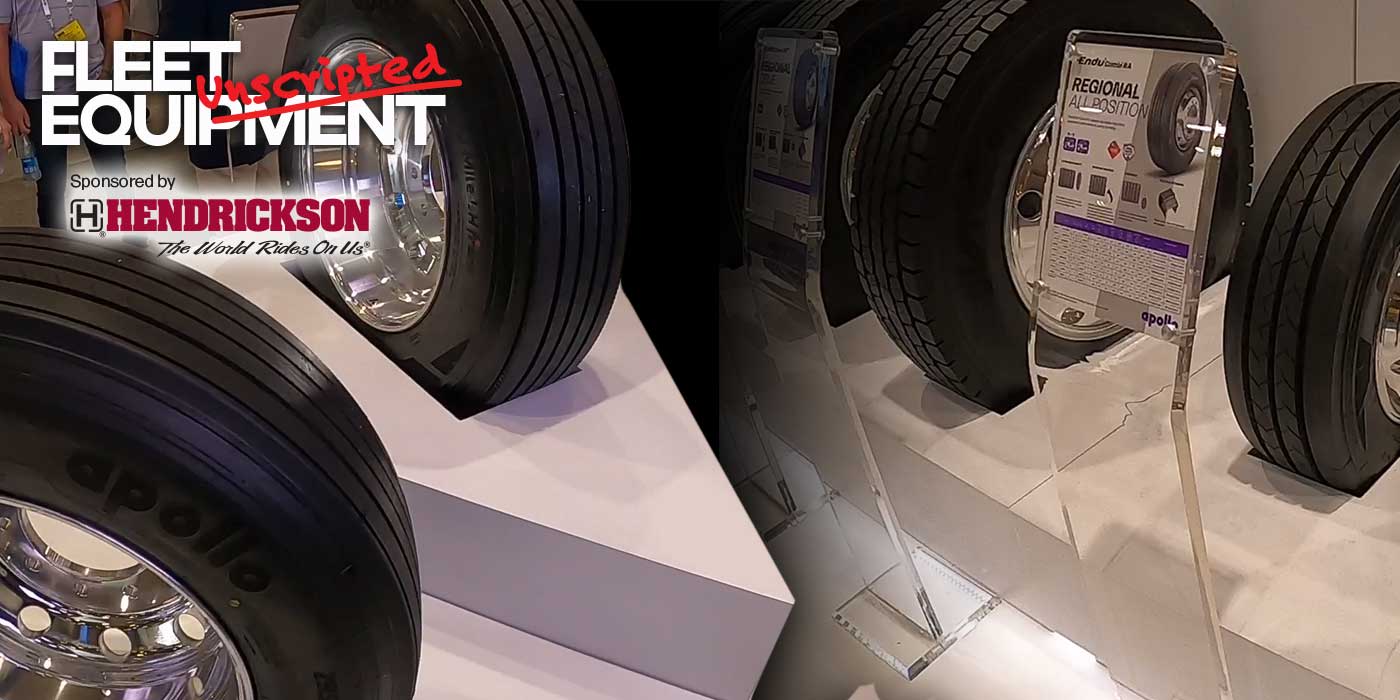Most fleet managers are aware that tires play a significant role in mitigating fuel costs. Based on data provided by tire manufacturers and EPA testing and research, the government agency determined that certain tire models can provide a reduction in NOx emissions and an estimated fuel savings of 3% or greater, relative to the “best selling” new tires for line haul trucks, when used on all five axles on long haul Class 8 trucks. To date, EPA has verified an extensive number of low rolling resistance tires produced by 19 different tire manufacturers. Some of those major tire makers explain the technology behind the designs and outline the features and benefits of these tires—and the importance of properly maintaining tires to ensure top performance.
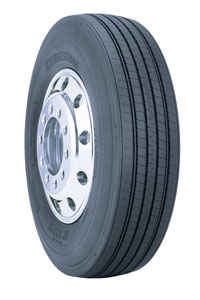
Bridgestone: According to Guy Walenga, director, engineering for commercial products and technologies, Bridgestone Americas Tire Operations, “The new trend in compounds is to create lower rolling resistance tread compounds and lower rolling resistance compounds for sidewalls and bead fillers. We are constantly trying to improve rolling resistance and removal mileage, and, in some cases, we can do both. However, we cannot, due to compound changes for lower rolling resistance, reduce our overall casing durability because that would reduce our retreadability. Retreading is recycling and recycling the casing with a retread of low rolling resistance compound provides further value in more miles for the money and continued improved fuel economy from the original tire purchase. Tread designs will become shallower to improve overall rolling resistance as long as we can continue to provide equal or better removal mileage. And as tread designs become shallower, we get the added advantage of less tire weight. Reducing the materials needed to build a tire and the reduction of mass to be repeatedly accelerated and decelerated when fitted on a truck will also enhance overall vehicle fuel economy. At the same time we cannot compromise on durability, traction, braking and tire noise, so you can see that lower rolling resistance tires are not a simple product.”
He goes on to say that to get the best overall cost per mile in tire performance in terms of mileage and fuel economy, a fleet needs to spec premium, fuel-efficient tires, and retread these casings with fuel-efficient retreads for the drive and trailer positions. And, at all times, a fleet must take the time to check, adjust and maintain target tire inflation pressures to get the best wear performance and the lowest rolling resistance, leading to the best vehicle fuel economy possible.
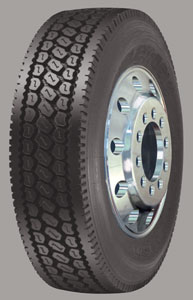
CMA: “Many manufacturers are looking at the combination of lower rolling resistance compounds without giving up performance and durability characteristics,” notes Aaron Murphy, vice president CMA, LLC (subsidiary of Double Coin). The development of lighter, stronger and more durable tires that can also conserve fuel for varying truck configurations and applications seems to be a focal point.
“Some items that contribute to types of trends and developments include unique tread sipes as well as tread and internal rubber compounds that deliver multiple advantages to tire performance. Also important factors are lighter and stronger steel to enhance durability and reduce weight. These are just a few items that are always in development.”
When specifying tires, Murphy says each fleet has its own criteria to support their needs for performance. Within the fleet, you have vehicle set up and requirements that dictate different performance factors from the tires. Double Coin has worked with fleets to recommend and specify the best product for each wheel position based on each company’s requirements, he added.
“Each fleet has its own specification, especially in different parts of the country. For example, emissions standards and CARB laws are also factors to consider when spec’ing tractor/trailer units for optimum benefits. Whatever the requirement, Double Coin works with the fleet and its manufacturers to provide the best options for their objectives.”
When it comes to maintaining tires, Murphy agrees that consistent air pressure control is a key component in a complete tire care program. Driver education, preventive maintenance measures and electronic monitoring all work to reduce downtime and increase the performance of tires. Whether it’s catching irregular wear early, removing tires for retreading at the appropriate time or keeping air pressure in tires consistent, these pivotal actions are some of the keys to increasing the overall performance of tires and reducing a tire program’s cost per mile.
Murphy says Double Coin successfully provides products and services that are very accessible to fleet managers. The company has numerous points of sale throughout North America and its growing footprint places Double Coin products closer to end users. “Programs like our National Fleet Purchasing Agreement allow for additional services to be utilized in order to reduce tire costs. In conclusion, consistency in products, services and support give fleet managers additional tools in the fight against rising maintenance costs.”
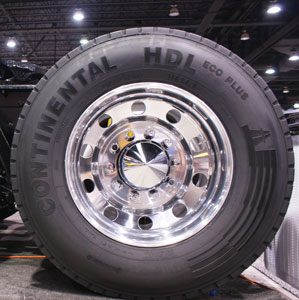
Continental: According to Roger Stansbie, director of radial truck tire technology at Continental Truck Tires U.S.A., when it comes to tire compound technology, most manufacturers guard their recipes and are reticent to share their secrets. But, he adds, most everyone knows that the compounds that make the best fuel-efficient tires are those that rely heavily on natural rubber, using as much as possible to lower rolling resistance. However, he notes, the price of rubber these days is a factor, which means that some tire makers are including more synthetic materials as part of the tread designs. One problem that causes is tire makers are required to use expensive tire black reinforcements to reduce hysteresis that’s native to rubber.
“We use compounds that we can build up in the base layer of the tread,” states Stansbie. “The rubber compounding in the tread is important to help resist cuts and chips.”
Stansbie says fleets that are interested in fuel-efficient tires should first consider tires that meet EPA SmartWay specifications. “Making tires that meet these specifications is a voluntary thing for tire manufacturers. But because their customers are interested in SmartWay tires, they are making tires that comply.” Customers are not only interested in the initial benefits of the new SmartWay-compliant tires, Stansbie notes, but are more demanding when it comes to making sure the retreads they purchase have casings from SmartWay-compliant tires, viewing these casings as premium products.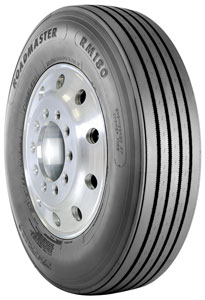
Stansbie says it’s all about maintaining proper tire air pressure. “Proper air pressure optimizes deflection under load,” he says. “These days tire pressure monitoring systems help ensure that tires have the correct air pressure. Fleets have several options, including onboard systems that keep the tire inflated or systems that simply give the driver a warning light when underinflation occurs. It is also important that tires are in good condition. Damage, such as chunking, can affect rolling resistance. Also, for best results, don’t mix and match tread designs on the vehicle.”
Cooper Tire: William Hoban, Cooper Tire sales manager, said, “The trends we see in compounds are to become more fuel-efficient while maintaining comparable wear. Customers want the benefits of fuel-efficient tires without compromising mileage or performance. The Roadmaster’s RM180 steer tire is an example of combining mileage and low rolling resistance through sophisticated compounds and advanced construction. Tread designs are becoming more application specific. Manufacturers are offering more options to customers. For example, long-haul drive tires are trending in two directions. One is for fuel economy, the other for maximized mileage.”
When it comes to spec’ing tractor/trailer units for optimum benefits, Hoban notes, “The best way to spec tires for optimum performance is to determine the specific requirements. In some cases we have fleets buying Roadmaster RM180s for steer and drives to maximize fuel efficiency. If more traction is required, they can purchase the Roadmaster RM275.”
Hoban also believes good tire maintenance plays an important role, and says fleet managers who implement a rigorous maintenance program consistently reduce their overall operating cost. In addition, the second generation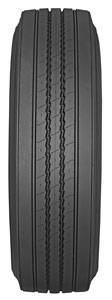 of TPMS, known as TPMS 2.0, is a very useful tool. It delivers tire inflation data to the driver, the fleet manager and a service provider. The communication of system data from the vehicle using satellite, cellular, Wi-Fi or other wireless technologies is the key link. With this technology a pre- or post-trip tire inflation inspection can be done on a laptop or smartphone.
of TPMS, known as TPMS 2.0, is a very useful tool. It delivers tire inflation data to the driver, the fleet manager and a service provider. The communication of system data from the vehicle using satellite, cellular, Wi-Fi or other wireless technologies is the key link. With this technology a pre- or post-trip tire inflation inspection can be done on a laptop or smartphone.
GITI: According to William Estupinan, director of technical service for North and Latin America for GITI Tire, (GT Radial is the company’s flagship brand), “Three main factors impact the rolling resistance in a tire: tread compounding, tread pattern design and tire structure. Tests show over 50% of the rolling resistance of a tire is generated from the tread and belt package; as such, many research hours are spent to study and improve these components.”
Tire companies develop tread compounding techniques to reduce the energy absorption and consequent heat generation within the tread and belt package that, at the same time, do not compromise other important factors such as durability. Low energy absorbing materials are sometimes referred to as reduced hysteresis materials in this context, he noted.
The tread pattern design is also an important consideration when trying to improve the fuel efficiency of a tire—streamlined ribs, blocks and lugs; good balance between cap and base compounds; shallower tread depth; and stiffening the belt package are all important considerations.
On a tractor-trailer combination, the steer tires contribute 15%-20% to fuel economy, drive tires 30%-40% and trailer tires about 40%-50%, according to Estupinan. Considering that trailer tires have the biggest impact on fuel economy and they represent the biggest population in the average fleet in America, selecting the proper trailer tires for the fleet will have the biggest impact on miles-per-gallon consumed than any other wheel position. Therefore, the first priority for a fleet interested in saving a significant amount of money is to start moving into fuel-efficient tires (SmartWay verified), starting with the trailer axles and continuing with steer and drives.
EPA has determined that using trailer aerodynamic devices in combination with one another (or alone) has the potential to provide an estimated 5% or greater reduction in fuel use relative to the truck’s baseline, when used in conjunction with an aerodynamic tractor on long-haul Class 8 trucks in a highway-type operation.
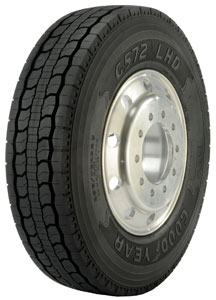
“The four key elements that contribute to the extended life of any tire are: air pressure, rotation, mechanical maintenance of the vehicle and speed,” Estupinan says. “While maintaining the proper overall maintenance of steer and drive tires is relatively simple and achievable, the overall maintenance of a trailer tire is the most challenging since trailers are frequently rotated or released in a route or during delivery change; their maintenance level is one of the poorest all equipment considered: tractors, dollies, trailers, etc.”
Goodyear: Tim Miller, marketing communications manager for Goodyear, says, “If there is a trend in fuel-efficient tires, it is the trend to not have to give up other important tire performance characteristics in order to achieve better fuel economy. Case in point, our new G572 LHD Fuel Max tire is EPA SmartWay verified, but it has a full 30/32nd tread depth. Previous fuel-efficient drive axle tires had reduced tread depth to improve rolling resistance but with the less wearable rubber, the overall treadwear mileage was not a great as a standard drive tire.”
He goes on to say, “Of course, spec’ing tractors and trailers with wide base drive and trailer tires needs to be considered, but it is important for fleets to understand that if fuel economy is the number one priority, wide base may not be the best answer. Wide base tires are lighter than a pair of duals and therefore offer fleet potential fuel economy improvement or the ability to carry more revenue-generating loads. But, looking at the big picture (measurable fuel savings, resale value of vehicles, etc.), wide base may or may not be the way to go. We like to feel we are offering a product lineup that gives fleets the options they need to make the right decision for their needs.”
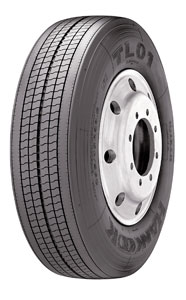
Hankook: According to Clint Covey, TB development engineer Hankook Tire–ATC, “Low RR tread and sub-tread compounds generally exhibit lower hysteresis. This means as the tire rolls and the rubber is deformed, less mechanical energy is converted to heat energy. This effect may be gained with higher silica content, or other compounding methods.”
As for getting the optimum fuel benefits when specifying tractor/trailer units, Covey notes that tractors and trailers should be outfitted with low rolling resistance tires in all positions for optimum fuel-saving benefits. A good starting place is to equip with SmartWay-verified low RR tires on all positions. Hankook has TL01 trailer tires, AL07+ and AL11 steer tires, and Z35A and DL11 drive tires available, all of which have exemplary RR performance, and are SmartWay verified, he adds.
Maintenance needs to include match-mounting and spin-balancing of all tire and wheel assemblies, Covey notes; proper vehicle/trailer wheel alignment and suspension maintenance is extremely important to get the best wear performance from the tires. Many wear issues originate with poor maintenance.
“Proper tire inflation checks should be performed daily, Covey says. “This means actually checking the cold tire pressure with a gauge (not a tire thumper) and adjusting the pressure as needed. Tire pressure should be set appropriately for the axle loads seen in service to ensure for optimum tire wear and fuel efficiency. Running tires at higher pressure does increase fuel economy, but it negatively affects tire wear to over-inflate, so any fuel economy improvement would be overshadowed by wear issues.”
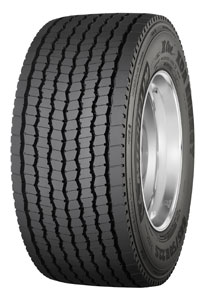
Michelin: Paul Johnston, market segment manager for Michelin Americas Truck Tires, says, “Tread features are an important feature of tire design as they do have an impact on the rolling resistance of tires. Generally speaking, the more open blocks or deeper tread the tire has, the more rolling resistant the tire is, thus consuming more fuel. As a reminder, rolling resistance is the energy it takes to get and keep a tire turning. The lower the rolling resistance is, the better the fuel economy.”
He points out that the most fuel-efficient tread is a shallow rib design. However, there are trade-offs associated with such designs. Shallow rib tire treads don’t provide the traction that lug or block treads provide, nor do they provide the significant tire mileage seen in deeper, lug tire tread designs. Rib designs are seen more commonly on steer and trailer tires. Drive tires tend to have the deeper lug designs due to the need for traction and long mileage.
Tread compounds also play an important role in fuel efficiency. Johnston notes, “Silica added to tires in the early 1990s provided a means for tire manufacturers to provide a lower rolling resistant tire, resulting in better fuel economy. Michelin is continuing to develop more technologies to push each performance characteristic for improvements without sacrificing the gains made on the other characteristics.”
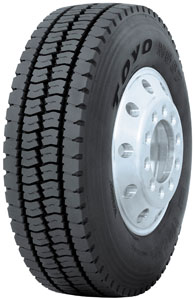
Toyo: Lori Simonelli, senior director of technical services, Toyo Tire U.S.A. Corp., points out that the most notable change in tire compounds and tread patterns have been influenced by EPA SmartWay verification. She adds, these have new technology tread and sidewall compounds that generate less heat and therefore lower rolling resistance.
When asked how fleets should spec’ tractor/trailer units for optimum benefits, Simonelli says that fleets should consider shallow tread, fuel-efficient, SmartWay-verified trailer tires with low rolling resistance and SmartWay-verified drive tires. She points out that 85% of the tire configuration’s drag forces come from the trail and drive positions.
As for maintaining tires, Simonelli notes, “Fuel efficiency is affected by vehicle geometry, load, torque, temperature and tire inflation. For every 10 PSI under inflation, there is a loss of up to 1% in fuel economy.” So fleet managers and/or drivers need to regularly check tires to make sure proper inflation is maintained.
Yokohama: According to Rick Phillips, Yokohama director of commercial sales, “We are constantly striving to improve our tread designs as well as the other areas of the tire that affect the tread. For instance, we always begin with a quality casing—as the casing is considered the foundation of the tire—so we are looking at casing improvements that will enhance tread performance. We additionally use computer modeling to simulate operation conditions and to predict the changes in the tire as it wears. There is also obviously a major focus on lowering the rolling resistance of the tire to be more fuel efficient.”
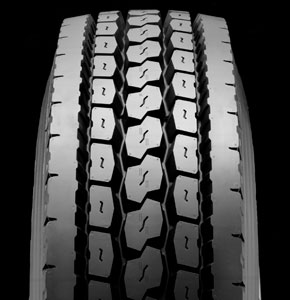
Yokohama offers Zenvironment products, which Phillips says are the company’s latest and most technologically advanced tires. He notes, “This entire concept is a blend of four elements of tire development: 1. The casing; 2. The rubber compound; 3. Tread design; and 4. The manufacturing process itself. Currently, we offer four Zenvironment products: 101ZL, premium long haul steer tire; 703ZL, premium long haul drive tire; 103ZR, premium regional steer and all-position tire; and 501ZA, premium on/off road all-position tire.”
Phillips goes on to say, “The more rolling resistance or drag created by tire, the more horsepower required from the engine to overcome that drag. This in turn increases fuel consumption. The individual tread elements, the actual tread depth and the rubber compound of the tread all combine to influence or manage the rolling resistance or drag that is produced by the tire.”
Tread technology is a good selling point to fleets because the benefits of technology are important. When you think about it, the tread is the only part of the tire that actually makes contact with the road surface. That small patch of rubber and its footprint against the road surface is what ultimately controls the direction and speed of the entire vehicle. Phillips adds, “When the technology is applied properly, the results are dramatic and very beneficial.”
How lighter weight wheels contribute to fuel economy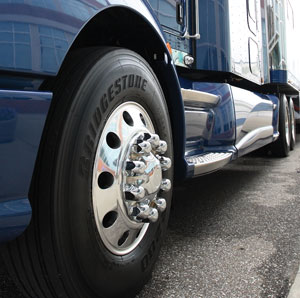
Spec’ing lighter weight wheels is a simple solution to increasing the overall fuel efficiency of a vehicle, and as gas prices continue to rise, the urgency for fleets to find solutions that contribute to fuel economy becomes greater than ever. Not only lighter in weight than steel, aluminum wheels are extremely strong and durable and increase freight capacity and maintenance savings for improved productivity and lower lifetime operating costs.
Aluminum wheels, such as Alcoa wheels, also offer an enhanced image and solutions to achieving sustainability goals. Simply switching single steel 22.5-in. wheels to 14-in. wide base Alcoa aluminum wheels reduces the weight of an 18-wheeler by 1,350 lbs. The upgrade takes advantage of this significant weight reduction coupled with the increased savings from lower resistance wide base tires to further improve fuel efficiency. Alcoa wheels’ strength, durability and low weight deliver environmental advantages to complement their financial benefits. With larger payloads due to the weight savings, trips are reduced, and, since Alcoa wheels are infinitely recyclable, they’ll never see a landfill, the company said.




